WE´RE BACK ON SCREEN
WE´RE BACK ON SCREEN
by Norman Warwick
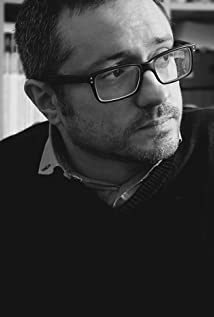
The short film, Before The Eruption, shot in Lanzarote by Roberto Pérez Toledo, (left) premierred recently on Movistar Plus. The piece, shot entirely in natural locations in Lanzarote, has just won the Best International LGTBI Short Film Award at the Alicante International Film Festival and has already been seen at festivals in the United States, Australia, India, Chile, Greece, South Korea, Mexico or Brazil. it has also been shown at the Official Section of the prestigious Huesca International Film Festival, which qualifies for Oscar Awards. Come follow your art as we follow sidetracks and detours along Lanzarote´s lunar, and very cinematic, landscape.
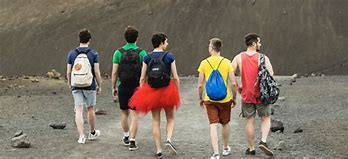
Before The Eruption, the latest short work by Lanzarote filmmaker Roberto Pérez Toledo, is the first he has shot on his native island. The Director of feature films such as Six Points On Emma and Como la Foam and of several multi-award-winning shorts such as Vuelco or Los Gritones”, Pérez Toledo continues to deliver diverse and committed cinema, putting the magnifying glass this time on the transgender reality.
With a cast made up of young people including Pablo Capuz, Javier Orán, Javier Morgade, Edgar Córcoles and Jorge Alcocer, Before The Eruption is, according to Roberto Pérez Toledo, ´a postcard about those first days in which its protagonist tells who he really is to his best friends, while they all take a trip to Lanzarote that they have dreamed of since they were children´.
´Identity is the great basic theme of the film´, Toledo has said. ´The imperative need to find your little place in the world and occupy it. And suddenly I imagined these characters among volcanoes. On the island where I was born, Lanzarote. And then I understood why: because our identity, what we are, is like a volcano that erupts destroying everything. You can try to make the volcano stay asleep, but your identity ends up gushing out, like lava. Because you cannot silence or appease who you ´.
Before The Eruption is a production by Rafael Álvarez through MGC Marketing Production with Gestion Cultural in partnership with La Crème Film. Photography direction is by Juanmi Márquez from Tenerife.
The short film will still continue its journey through festivals around the world, having now been made available to tv.
Born in Lanzarote, Roberto Pérez Toledo has a degree in Audiovisual Communication. In 2012 he released his first feature film as director and screenwriter, Six Points On Emma, which won the Silver Biznagas for Best Actress (Verónica Echegui) and Best Screenplay at the Malaga Film Festival, the Audience Award and the Award for the Best First Feature at Cinespaña (France), the Best First Feature Award in MadridImagen or the Best Canarian Feature Film Award at the Las Palmas International Film Festival, among other awards.
In 2013 Toledo took part in the collective feature film Al Final Todos Mueren, along with three other directors and with the sponsorship of Javier Fesser, and in 2014 he launched the tv-movie (shot according to the #littlesecretfilm manifesto) Los Amigos Raros, broadcast on the channel Calle 13 and later turned into a viral phenomenon in the network, where it has accumulated more than twenty million viewings. In 2017 he released his latest feature film, the third solo, entitled Como La Foam.
He is also the director and scriptwriter of more than forty short films that have toured festivals on five continents and won dozens of awards. Many of them also accumulated millions of views on their YouTube channel, where their branded content works with brands such as El Corte Inglés or Mapfre also stand out.
For his contribution to cinema that makes sexual diversity visible, he has recently received the Honorary Award from Lesgaicinemad, the most important LGBT-themed festival in Madrid in Spanish-speaking countries.
He recently created and directed Amor Superdotado, the first Spanish fiction series for Facebook Watch, and he has just shot his new feature film, Places We Have Never Gone To.
Those of us who live on Lanzarote are aware of how often roads are closed because some big car manufacturer is having movie film adverts made, or magazine photo-shoots, of their latest all singing, all dancing vehicle, set against spreading sunsets and volcanic horizons, or of it speeding round the coastline against a backdrop of waves crashing against the cliff face. We remember the road down past Los Hervideros being closed three or four years ago whilst a promotion was being made of a new model that when we finally got to drive beyond the place it was parked after its runs for the cameras, was covered in thick white blankets that disguised its shape and contours.
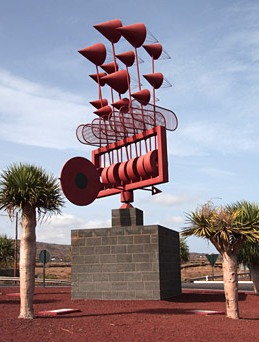
Most recently, Pedro Almodovar shot large segments of his commercial cinema release Broken Embraces in various locations around the island. If you get the opportunity to see the film try to spot Lanzarote´s wine region, the beach at Famara and the ´wind toy´, Fobos, (left) close to the César Manrique Foundation.
Published lists of films shot on Lanzarote almost always include Planet Of The Apes, but even though our island´s lunar landscape is indelibly associated with the horizons seen on the film, these were, according to the on-line tourist information guide, in fact shot in the Arizona desert. Nor should Journey To the Centre Of The Earth, another film often linked to Lanzarote, be included on those lists, as it was actually filmed in Tenerife.

However, Lanzarote has certainly contributed to some major cinematic films including One Million Years BC, the 1966 movie starring John Richardson, and more famously of course, Raquel Welch (right) and directed by Don Chaffey.
The film´s fascination with dinosaurs was unmatched until the arrival in the world of the Jurassic Park franchise.
Apparently in the year of One Million BC dinosaurs chased bikini clad females and club wielding males all over what is now Timanfaya. These days I´m not sure which would scare me most if I were driving over the volcano field; a dinosaur lumbering down the side of the road or a half dressed Raquel thumbing a lift to Teguise
The film, though, is a classic of the sci fi genre and
was extensively shot on location in and around the Volcano Park, as well as other instantly recognizable spots such as the Green Lagoon at El Golfo.
Another high quality sci-fi film was made here in the mid nineteen eighties. Enemy Mine was a drama directed by the highly respected German Wolfgang Petersen, who was also at the helm for later box office hits such as Troy, Poseidon and The Perfect Storm.
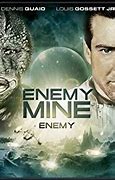
Enemy Mine tells the story of a space battle in which a space module is blown out of the sky and crash-lands on a planet of hostile environment. The part of the hero was played by Dennis Quiad. The part of The Planet was played by Lanzarote !
Raquel Welch and Dennis Quaid are not the only famous film starts to have filmed here on location. Liam Neeson, and the wonderful Lysette Anthony were the lead protagonists in Krull, yet another sci fi movie to feature Lanzarote as an alien landscape. The film was shot here in 1983 and was directed by Peter Yates.
Maybe it says something about how such a small island can cast such giant shadows to so many far horizons that Lanzarote has proved not only to be an ideal backdrop in big screen productions but also has lent itself to small screen television.

In the very early days of Dr. Who, (although early is subjective, I think, and depends in which time direction he was heading) visited Lanzarote for an outside broadcast in 1963 and was obviously a carefully selected site for an episode entitled Planet of Fire.
Even the TV mini series version of Ray Bradburys classic novel, The Martian Chronicles, took advantage of Lanzarote´s unique vistas for its location.
It should be remembered that Lanzarote not only has suitable landscapes for film makers to misappropriate, but it has perfect evening weather for the outdoor screening of the films that were made here to benefit from those landscapes. It comes to me now that, after growing up with a love of all things American, (rock and roll, cowboys and Indians and wide open spaces and new frontiers) I was struck, when enjoying my first holiday on Lanzarote twenty years ago, how much some of the mountains and plains here reminded me of where Ward Bond would lead his Wagon Train, where Gil Favor and Rowdy Yeats would drive their Rawhide and where The Lone Ranger used to gallop Silver and where Tonto would hold his finger to the wind in those thrilling episodes of yesteryear. Until coming here, these were landscapes I had only seen in grainy black and white on a 12 inch screen, now here it all was in real life and glorious technicolour
Another thing America enjoyed, I learned as a child, was Drive In Movies, but the first such event I ever attended, and it was a much modified version at that, was in Puerto Del Carmen where they were showing School Of Rock. Apart from that one night, I have yet to take real advantage of the many screenings at the town´s open air cinemas.
In our first couple of years here, without a tv, we made notes we wanted to see showings of Mama Mia, Darkest Hour, La La Land etc but our thirst for live entertainment and the surfeit of concerts etc provided over here saw us wait until we bought a tv to catch them all on-demand.
A couple of years ago Rochdale’s Broadfield Park and the Yorkshire Street area became the setting for the Leaky Shed film And She Cried (see Alchemy Fusion And Funding posted on 13th December 2019 in our film archives).
Lanzarote’s intriguing ‘lunar’ landscape similarly has been the setting of another famous film, Planet Of The Apes. That was not the first Hollywood film, however, to benefit from the island’s stunning backdrop.
In 1956 John Huston produced Moby Dick, famously starring Gregory Peck and the piece was shot on location throughout the Canary Islands. Ten years later Don Chafey directed One Million Years BC, also filmed on Lanzarote. The film introduced the world to Raquel Welch and there was a famous advertising ‘still’ of her in a brief doe-skin bikini. Some would argue though that even Raquel dressed skimpily as a cavewoman was overshadowed by scenery including Timanyfaya and El Golfo. That advertising fed the fantasies of my generation of teenage boys and few of us even noticed the strangely mysterious green lagoon behind her. It is still here today, though, drawing tourists in their thousands each year.
Even the Cuervo Volcano in the Timanfaya range was the background for a Wolfgang Petersen film, Enemy Mine, starring Dennis Quaid
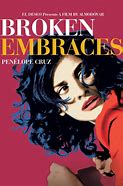
Nor is Ms Welch the only stunning actress to have worked on Lanzarote, for in 2009 the lovely Penelope Cruz filmed in the Pedro Almodovar production of Broken Embraces based on a real life incident that occurred at the green lagoon from which El Golfo takes its name.
Much more recently a Spanish, French, Belgian collaboration was invited by The Lanzarote Film Commission to use the island as the main location in Evolution. The movie was made by Lucile Hadzihalilovic, telling the story of a young boy living on the island and the rites of passage he undergoes after finding a body in the sea.
The film, and its background scenery has since been critically acclaimed at showings at Film Festivals in Toronto and San Sebastian and Lucile became the first woman to win the Stockholm International Film Festival.
Recently filmed on the island was A Summer At Caleta de Famara, a location on the island popular with gap year holiday workers, surfer dudes and young holiday makers in general. This is being shot for prime time viewing on German television.
Other Lanzarotan locations being filmed for the programme include Teguise, Yaiza and Haria and, for reasons that will become apparent on showing, several tourist information offices.
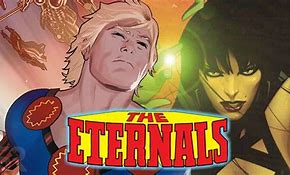
Greater love hath no man for his readers than to write an article when he could have been exploring his local landscape to catch glimpses of Angelina Jolie (pictured above). This week she and her co-stars, Salma Hayek, Richard Madden and Rob Stark, have been filming on Fuerteventura and Tenerife, before coming over here to Lanzarote to film more location shots on the island. The film they are making, a Marvel production called The Eternals, is expected to be the highest budget movie made in Europe this year.
My stalking, sorry, I mean research, took me on a drive over Le Geria and I passed the temporary film camp at Volcan El Cuevo (La Asomada), where filming was taking place on an esplanade between Masdach and Tegoyo in the area of the Camino del Guaco.
The filming team was authorised by the city council to continue until Sunday 24th November, but I had caught sight of all this during the Thursday and Friday that were expected to be the duration of the shooting.
It had been agreed that the film crew would ensure that everything was locally sourced. Indeed, Cabildo sources have confirmed that the production of the film has seen local companies and producers hired for the filming of the scenes of the island. This means important economic benefits that this blockbuster will leave as a legacy of their time on Lanzarote.
The German TV romance ´A summer on Lanzarote (2016)´ is also set in Lanzarote and has a central location: the bakery of ´Mother Erika (Ulrike Kriener)´. But if you want to follow in the footsteps of the film heroine, Juliane (Christina Hecke), you will soon find out that this bakery should be located in the picturesque village of Uga, in the middle of the municipality of Yaiza. However, the job of temporary baker Sancho is nowhere to be found. The solution of this search game is quite simple. For the film production the local pizzeria ´La Cantosa´ was completely rebuilt. So if you want to eat pizza where ´German film history´ was written, you can do so here.
There is currently much debate about whether computer-generated synthespians, the Holy Grails of animation, may be the saviour of the film industry through these troubled times. Doubters point out that cost issues. might prove as troublesome as meeting technical challenges.
´If your expectations aren’t too much, you might be able to get a quick cameo´, it is thought by some, ´but it’s really a question of cost. You could probably land people on Mars for less money.´
The conversations about the merits and production cost of such animation become more urgent in these post Covid days. We are maybe tomorrow, someday, never away from films showing to full cinemas and political months or realistic years away from being able to again assemble casts for interactive scenes, so the need for affordable animation becomes more evident.
Any readers who are thinking what is the point of making animated films, anyway, if there are no audiences allowed into cinemas, should be aware that the film industry is planning ways of sending its movies out via innovative means.
Watch out for new movies, … coming soon to mobile phone near you !




Leave a Reply
Want to join the discussion?Feel free to contribute!